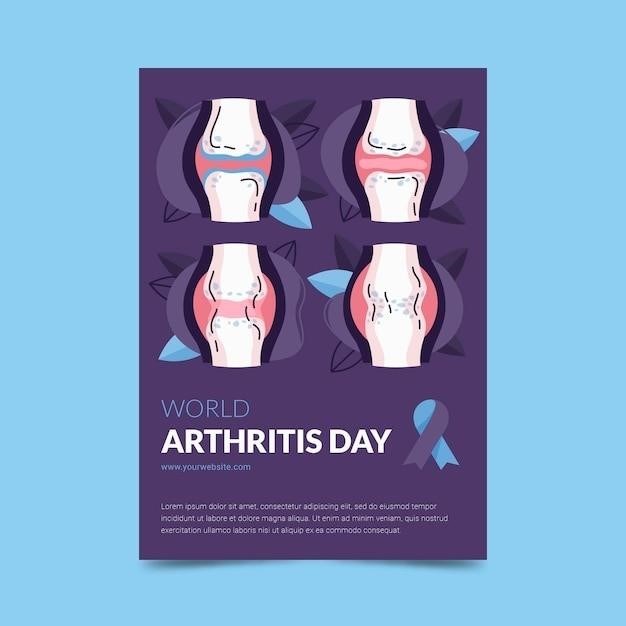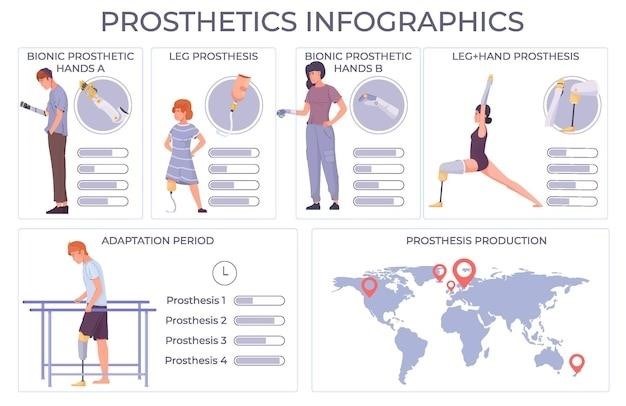What is Trochanteric Bursitis?
Trochanteric bursitis is an inflammation of the small sack of lubricating fluid on the side of the hip. The bursa, a fluid-filled sac, is located at the outer aspect of the hip, near the greater trochanter, a bony prominence on the femur. Inflammation of the bursa can cause pain, tenderness, and stiffness in the hip, often radiating down the thigh and into the buttock.
Definition
Trochanteric bursitis is a condition characterized by inflammation of the trochanteric bursa, a small, fluid-filled sac located on the outer side of the hip, near the greater trochanter. This bursa acts as a cushion between the tendons of the hip muscles and the bony prominence of the greater trochanter, reducing friction during movement. When this bursa becomes inflamed, it can cause pain, tenderness, and stiffness in the hip region. This condition is commonly referred to as “greater trochanteric pain syndrome” (GTPS) and is often associated with overuse or repetitive movements involving the hip muscles.
Causes
Trochanteric bursitis is often triggered by repetitive movements or overuse of the hip muscles, leading to friction and irritation of the bursa. Common causes include⁚
- Overuse⁚ Activities like running, cycling, or prolonged standing can put excessive stress on the hip muscles, leading to inflammation of the bursa.
- Tight muscles⁚ Tightness in the hip muscles, particularly the gluteus medius, can increase pressure on the bursa, contributing to inflammation.
- Direct trauma⁚ A direct blow or fall onto the hip can injure the bursa, causing inflammation.
- Poor posture⁚ Maintaining poor posture, such as slouching or standing with one leg longer than the other, can strain the hip muscles and lead to bursitis.
- Leg length discrepancy⁚ A difference in leg length can create uneven weight distribution, placing extra stress on the hip joint and increasing the risk of bursitis.
Symptoms
The most common symptom of trochanteric bursitis is pain on the outer side of the hip, often described as a sharp, aching, or throbbing sensation. This pain may radiate down the thigh and into the buttock region, and can be worse with certain movements, such as⁚
- Lying on the affected side⁚ The pressure of the body weight on the inflamed bursa can intensify pain.
- Getting up from a chair⁚ This movement puts strain on the hip muscles, aggravating the bursa.
- Climbing stairs⁚ The repetitive motion of climbing stairs can irritate the inflamed bursa.
- Walking⁚ Prolonged walking or standing can increase pain.
Other symptoms may include⁚
- Tenderness to the touch⁚ The area over the greater trochanter may be sensitive to palpation.
- Stiffness⁚ Movement in the hip joint may be restricted due to pain and inflammation.
- Swelling⁚ The area around the greater trochanter may appear slightly swollen.
Diagnosis
A physical examination and imaging studies are often used to diagnose trochanteric bursitis, helping to rule out other conditions.
Physical Examination
A physical examination is crucial in diagnosing trochanteric bursitis. The doctor will assess your symptoms, including the location, intensity, and duration of your pain. They will also ask about your activity level, recent injuries, and any other medical conditions you may have. The doctor will palpate the area over the greater trochanter to identify tenderness, which is a common symptom of trochanteric bursitis. They may also test your range of motion in the hip and assess your gait to determine if there are any limitations in your movement. The doctor may also perform a neurological examination to rule out any nerve involvement in the hip pain.
Imaging Studies
Imaging studies are often used to confirm the diagnosis of trochanteric bursitis and rule out other conditions that may cause similar symptoms. X-rays are typically the first imaging test ordered; While they may not show the inflammation of the bursa itself, they can help rule out other conditions, such as fractures, arthritis, or bone spurs. Ultrasound imaging can be helpful in visualizing the inflamed bursa and surrounding soft tissues. It can also help identify any fluid buildup within the bursa. Magnetic resonance imaging (MRI) is a more sensitive imaging technique that can provide detailed images of the soft tissues, including the bursa, tendons, and muscles. MRI can be helpful in identifying tears or other abnormalities in the surrounding tissues that may be contributing to the pain.

Treatment
Treatment for trochanteric bursitis aims to reduce pain and inflammation and restore normal function to the hip.
Conservative Treatment
Most cases of trochanteric bursitis respond well to conservative treatment. This typically involves a combination of rest, ice, compression, and elevation (RICE), along with over-the-counter pain relievers like ibuprofen or naproxen. Physical therapy plays a crucial role in conservative management, focusing on strengthening the muscles surrounding the hip and improving flexibility. Exercises designed to stretch the hip flexors, abductors, and external rotators are recommended. Physical therapists may also use modalities like ultrasound or electrical stimulation to reduce inflammation and promote healing. In some cases, corticosteroid injections into the bursa may be considered to provide rapid pain relief, but these are typically used only as a short-term solution and may have potential side effects.
Surgical Treatment
Surgical intervention for trochanteric bursitis is generally reserved for cases that haven’t responded to conservative treatment after a sufficient period of time, typically several months. The most common surgical procedure involves a bursectomy, where the inflamed bursa is surgically removed. This procedure is usually performed arthroscopically, using small incisions and a camera to visualize the area. In some cases, other procedures may be necessary, such as tendon repair or release, if underlying tendon issues are contributing to the bursitis. After surgery, physical therapy is essential for rehabilitation, focusing on regaining strength, flexibility, and range of motion in the hip. While surgery can be effective in relieving pain and restoring function, it’s important to remember that it’s not always the best option, and conservative treatment should be exhausted first.
Rehabilitation
Rehabilitation for trochanteric bursitis is crucial for restoring hip function and preventing future episodes. A physical therapist can guide you through a tailored program of exercises, stretching, and activity modifications to help you recover.
Exercises
Strengthening exercises are essential for regaining hip stability and reducing pain. These exercises target the muscles surrounding the hip, including the gluteals, hip flexors, and abductors. Examples include⁚
- Glute bridges⁚ Lie on your back with knees bent and feet flat on the floor. Lift your hips off the ground, squeezing your glutes, and hold for a few seconds.
- Side-lying hip abduction⁚ Lie on your side with your top leg straight and your bottom leg bent. Slowly raise your top leg towards the ceiling, keeping it straight, and hold for a few seconds.
- Standing hip abduction⁚ Stand with your feet shoulder-width apart. Slowly raise one leg out to the side, keeping it straight, and hold for a few seconds.
Start with a few repetitions of each exercise and gradually increase the number as you get stronger. It’s important to listen to your body and stop if you experience any pain.
Stretching
Stretching is crucial for improving flexibility and reducing tightness in the muscles surrounding the hip. This can help alleviate pain and improve range of motion. Effective stretches include⁚
- Piriformis stretch⁚ Sit on the floor with your legs extended. Cross your right leg over your left thigh, placing your right ankle near your left knee. Gently lean forward, keeping your back straight, until you feel a stretch in your right buttock. Hold for 30 seconds and repeat on the other side.
- Thigh stretch⁚ Stand with your feet shoulder-width apart. Grab your right foot with your right hand and pull it towards your buttocks. Keep your back straight and hold for 30 seconds. Repeat on the other side.
- Hip flexor stretch⁚ Kneel on your right knee, with your left foot forward. Slowly lean forward, keeping your back straight, until you feel a stretch in your right hip flexor. Hold for 30 seconds and repeat on the other side.
Perform these stretches regularly to maintain flexibility and prevent muscle tightness that can contribute to trochanteric bursitis.
Prevention
Preventing trochanteric bursitis involves a combination of lifestyle modifications and exercise recommendations.
Lifestyle Modifications
Lifestyle modifications play a crucial role in preventing trochanteric bursitis. Maintaining a healthy weight is essential, as excess weight puts added stress on the hip joints and surrounding tissues. It’s crucial to avoid activities that involve repetitive movements or put excessive strain on the hips, such as running or cycling for prolonged periods. Proper posture is also critical, ensuring that the spine is aligned correctly and that the hips are not subjected to undue pressure. Wearing appropriate footwear that provides adequate support and cushioning can help reduce stress on the hips and prevent further irritation. Addressing any leg length discrepancies, which can cause uneven weight distribution and strain on the hips, is also important. Finally, regular stretching and strengthening exercises can help improve flexibility and muscle strength, reducing the risk of injury and inflammation.
Exercise Recommendations
Regular exercise is crucial for managing and preventing trochanteric bursitis, but it’s vital to choose exercises carefully to avoid exacerbating symptoms. Gentle stretching and strengthening exercises are recommended, focusing on the muscles surrounding the hip, including the gluteals, hip flexors, and abductors. Stretching exercises should be performed slowly and gradually, aiming to increase flexibility and range of motion. Strengthening exercises should focus on building muscle strength and endurance, but avoid activities that cause pain or discomfort. Low-impact exercises like swimming, walking, and cycling are generally well-tolerated and can help maintain fitness without putting excessive stress on the hips. It’s essential to listen to your body and stop any exercise that causes pain. Consult with a physical therapist or other qualified healthcare professional to develop a personalized exercise plan that is appropriate for your individual needs and condition.
Trochanteric bursitis is a common condition that can cause significant pain and discomfort, but with proper treatment and rehabilitation, most individuals can achieve symptom relief and return to their desired activity levels.
Summary
Trochanteric bursitis, also known as greater trochanteric pain syndrome, is a common condition that affects the outer side of the hip. It occurs due to inflammation of the bursa, a fluid-filled sac that cushions the tendons and muscles around the greater trochanter, the bony prominence on the outside of the hip. This inflammation can lead to pain, tenderness, and stiffness in the hip, often radiating down the thigh and into the buttock. The condition is often associated with overuse, repetitive movements, or trauma to the hip. It can also be triggered by underlying conditions like arthritis or tight muscles in the hip. Trochanteric bursitis primarily affects individuals between the ages of 40 and 60, though it can occur in younger or older populations as well. While the condition is typically self-limiting and responds well to conservative treatment, some cases may require surgical intervention. With proper diagnosis and treatment, most individuals can achieve symptom relief and return to their desired activity levels.
Prognosis
The prognosis for trochanteric bursitis is generally good, with most individuals experiencing significant improvement with conservative treatment. The condition is typically self-limiting, meaning it resolves on its own over time. With proper management, including rest, ice, compression, elevation, and physical therapy, symptoms often subside within a few weeks to months. However, some individuals may experience persistent pain or recurring episodes. In these cases, further treatment options, such as corticosteroid injections or surgery, may be considered. The prognosis for trochanteric bursitis also depends on the underlying cause, the severity of the condition, and the individual’s overall health. Patients who are overweight or obese, have underlying medical conditions, or engage in high-impact activities may have a more challenging recovery. However, with appropriate treatment and lifestyle modifications, most individuals can achieve symptom relief and return to their desired activity levels.
